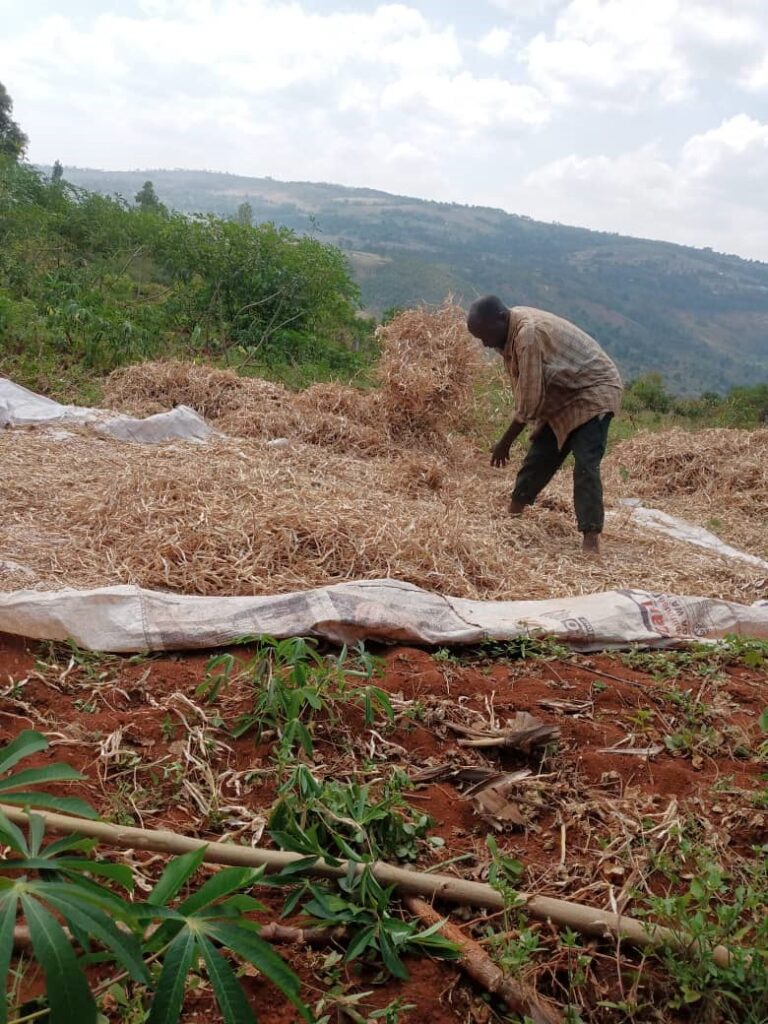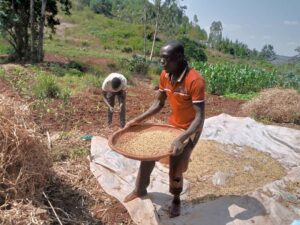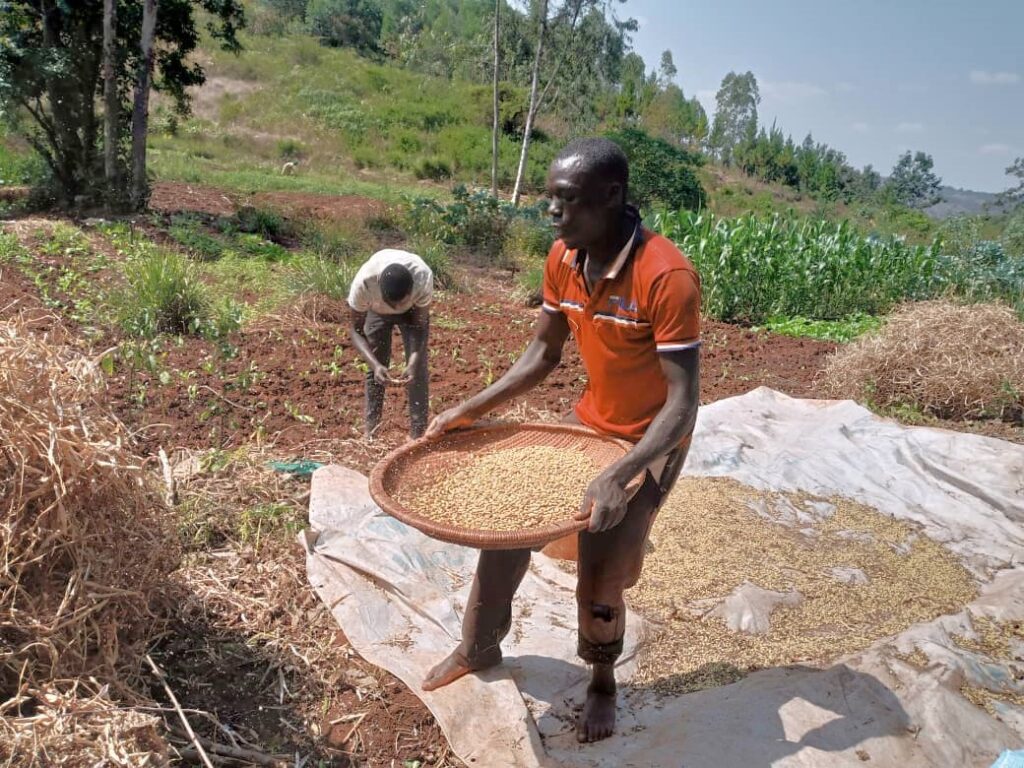Ngara, TZ – Parents contribute to close beans gap and sustain breakfast serving to children – Jun 2024
The Kabalenzi (KBL), Mukirehe (MKR) and Mukibogoye (MKB) Primary Schools experienced inconsistent rain this year, and unfortunately missed their target harvest by 2,044 Kgs of beans in June. In February 2024, SODAT had collaborated with the school children to successfully prepare and plant 7.5 hectares of beans on time, comprising KBL 3 acres, MKR 1.5 acres, and MKB 3 acres which were harvested in June this year.
During the past three years, Tanzania has been experiencing periods of drought, and occasional heavy rainfall which caused flooding and excessive water in fields. This affected the good growth of the seasonal farmed crops and led to under harvest. The rainfall begun early September and stopped early May before the beans fully ripened, which dried them before full growth. As a result, MKR harvested 410 kg on 1.5 acres, KBL 1,026 kg on 3 acres, MKB 608 kg on 3 acres which cannot sustain the yearly breakfast serving needs of the three schools’ total of 2,300 students. There is a largey gap between bean need and supply.

SODAT and the schools agreed with the parents that they donate beans from their home fields’ harvest to close the bean need and supply gap. This means MKR and MKB parents will contribute per child 2 Kg of beans, and KBL parents contribute per child 1 Kg of beans to provide breakfast every school days throughout the year until the next harvest in June 2025.
The SODAT team and schools learned lessons from these poor harvests. Some schools harvested more than others based on land location and use of contour farming techniques. KBL and MKB schools’ land slopes, which does not allow water stagnation in the fields during heavy rainfall seasons. MKR had the lowest harvest because its land is flat and water does not drain away well. The school may need to adopt a ridge farming technique during seasons with excessive rainfall.
This is a call to SODAT and schools to continue to co-operate with local agricultural officials and weather authorities, in order to learn the best planting and harvesting techniques and times during this time of changing climate.


